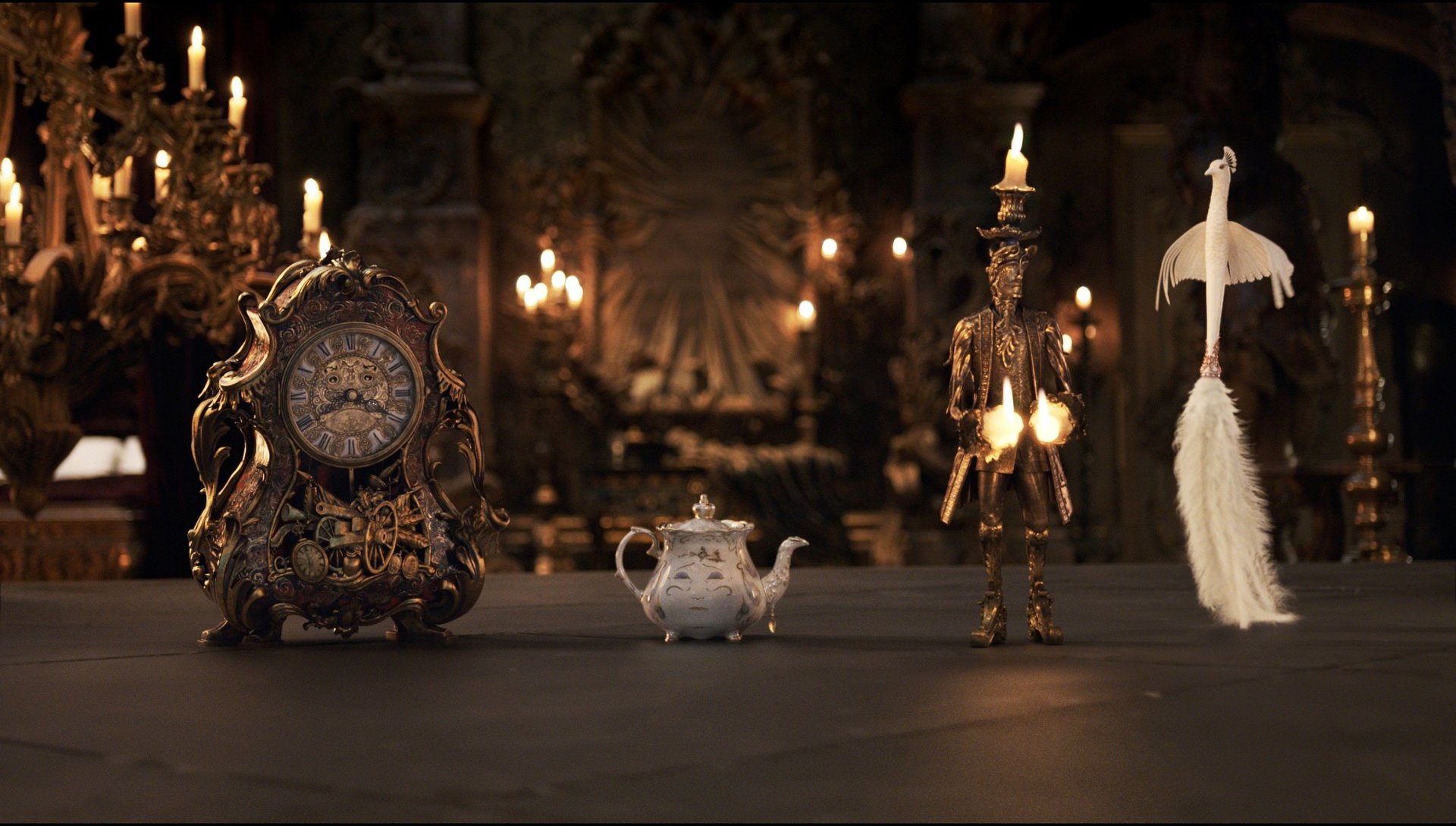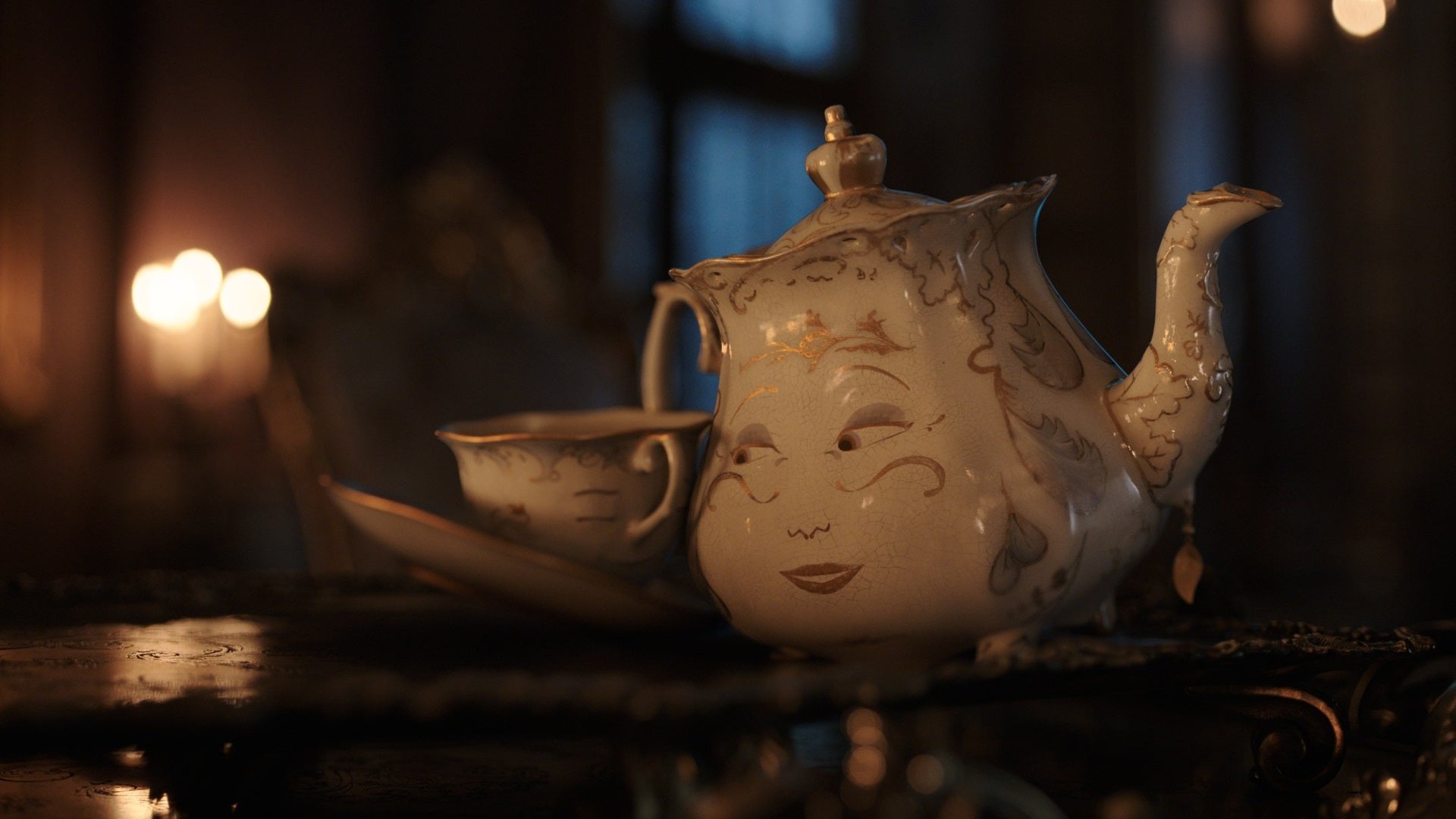Behind Disney’s struggle to bring the teapot from “Beauty and the Beast” to life
In movies, they can bring dinosaurs and superheroes to life. They can resurrect deceased legends, de-age Princess Leia, or turn Brad Pitt into a centenarian man-baby. Yet, it seems a porcelain teapot nearly stumped these special-effects wizards.


In movies, they can bring dinosaurs and superheroes to life. They can resurrect deceased legends, de-age Princess Leia, or turn Brad Pitt into a centenarian man-baby. Yet, it seems a porcelain teapot nearly stumped these special-effects wizards.
Disney’s Beauty and the Beast—released in theaters in many countries over the weekend—is based not just on the ancient fairy tale, but also it’s own animated children’s classic. Messing with people’s childhoods is always tricky. And one character in particular proved an immense challenge.
“We struggled for a long time on Mrs. Potts,” Steve Gaub, the visual-effects producer on the movie, told Quartz. “She’s sort of the calming influence on Belle. To get that sort of warmth and empathy and compassion out of a porcelain surface was challenging.”
Mrs. Potts, the housekeeper-turned-sentient-teapot, plays a pivotal role in the film. The enchanted teapot mothers not only her own children—most notably her teacup son Chip—but also Belle when she arrives at the castle. Gaub said the process took months. In the 1991 animated classic, Mrs. Potts’s nose was her spout. And it made her appear quite endearing.
But that didn’t work in the live-action version. “We wanted to keep the spout nose, we really did,” Bill Condon, who directed the new film, told the New York Times (paywall). “No matter what we tried, she just looked like a pig.”
So the spout was incorporated into her profile, instead. And her face was placed on the side of teapot. But then she looked too much like a common, inanimate tea kettle. There were three main versions of Mrs. Potts that were used in the new film.
“We probably spent more time on her—her design, her face, her facial expressions—than any of the other castle-staff characters,” said Gaub.
The first was the one that was too close to a real teapot. And the second was too ornate. It was made into a prop and used on set, but the animators had a hard time replicating the facial expressions in post-production of actress Emma Thompson, who played Mrs. Potts.
Her nose was formed from two leaves and her cheek bones were made of leaflets woven underneath her eyes. When she was animated, the leaves made it look as though her nose was running, and the leaflets made her look tired.
“That sort of revealed the problem,” said Gaub. ”Being so tied to the patterns on the initial painted teapot… it just didn’t feel like a warm, endearing face… We needed to divorce ourselves even further from [the painting pattern].”
The concept art for this version was released in an online video from Disney last fall, which has since been taken down. Fans weren’t impressed. They let their feelings be known on social media.
The third and final version of Mrs. Potts that appears in the film was created in post-production. The animators started with the face first and painted patterns around it that made it look as though her facial features had grown organically from the kettle. They also cleaned up the area from her eyebrows down to her mouth and across her cheeks, so that her face was much simpler.
“Mrs. Potts, the poor darling, she was almost more complicated than the Beast,” said Condon, the director, in the Times interview. “We went through a lot of trial and error to make her appealing in three dimensions. I think people will be happy.”

Bringing the dinner table to life
All of the castle’s staff were based on the real-life objects they embodied. For example, the early versions of Lumiére, the charming candelabra, and Cogsworth, the curmudgeon of a clock, were too loose and bendy. The team had to go back to the drawing board and imagine how these characters, made of iron and wood, would move if they were enchanted in real life.
“Condon put out a very strict mandate on the live-action feel of it. It should not feel like an animated movie,” said Gaub. “Even if you make it look like a real material, if the animation is so over the top, or without any restrictions or rules, it looks animated.”
For Mrs. Potts, the team at Disney, which worked with the visual-effects company Framestore, developed the initial design for the character based on patterns you’d find on a real, painted porcelain teapot. They imagined how those patterns might form the features of a face—eyes, a nose, a mouth.
Then, when the real-life cast pre-recorded their vocals, the crew filmed the actors and actresses to capture the idiosyncrasies each brought to the role. The animators used the movements and facial expressions of Thompson, who played Mrs. Potts, to bring the character to life.
That was the design process for all of the castle staff. The art department, lead by production designer Sarah Greenwood, would tweak the designs and build life-sized photo-finished props that would be used during filming. The set was intricate, and lit with candles by director of photography Tobias Schliessler. “It was really critical for us to see what real-world materiality would look like in that light,” Gaub said.
Each scene with the castle staff was filmed at least twice. Once with the human actors—Emma Watson as Belle and Dan Stevens as the Beast—which would be altered in post-production with CGI, and again with the props. Cogsworth was constructed of wood and pewter, for example. And Lumiére needed to be the appropriate weight so that nothing would look amiss when Belle picked him up. As Mrs. Potts moved through the castle on a teacart, someone from the prop team was there to push her across the set.
The characters were then brought to life in post-production with CGI. About 90% of the scenes with non-human characters in the movie used composites of the human actors, the props, and computer-generated imagery, or CGI, said Gaub. Only a handful of scenes were entirely CGI, like one where the Beast jumps across the exterior of the castle.
The film production came in under budget. But rather than pocket the surplus, Disney encouraged the team to use what remained to enhance the production value as much as they could in post-production.
“Many times when you save money on a shoot, the studio wants to keep that money,” said Gaub. “We knew they really wanted this to succeed.” The project reportedly cost more $300 million to make and market, according to the Times.
The Beast, being a massive furred creature with the soul of a man and legs unlike almost any beast that exists in real life, was the most challenging character to recreate overall, Gaub said. The Beast needed to be ferocious, but also gentle, lovable, and funny, at times. Stevens, who played the Beast, wore high-fidelity make-up on set that captured 1,000 different points on his face so the crew could work his expressions in during post-production.
The efforts seem to be paying off. Beauty and the Beast made $350 million at the global box-office during its opening weekend, according to Box Office Mojo. That marks the largest opening ever for a PG-rated film, overtaking Disney’s own Finding Dory.